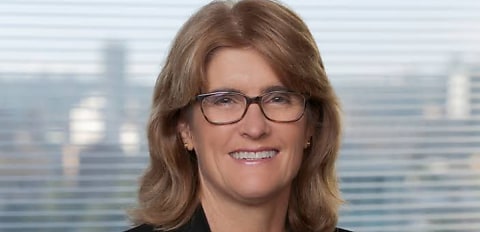The monetary policy decision media conference was underpinned by a motif of uncertainty yesterday (19 March) following the March meeting that saw the official cash rate remain at 4.35 per cent.
When asked on whether or not the Reserve Bank of Australia (RBA) has removed its previous hiking bias, RBA governor Bullock acknowledged that the board has altered its language but is not “ruling in or out” any further moves in the cash rate.
“We have changed the language. That’s true. But that was in response to some data which has demonstrated to us that we are still broadly on the path we [thought we were on],” Bullock said.
“We’re not confident enough to say we can rule out further interest rate changes, but we do think that we are on the path to get ourselves back to inflation in target within our forecast period.”
The aforementioned change in language refers to the board’s post-monetary policy meeting statement outlining that the “path of interest rates that will best ensure that inflation returns to target in a reasonable time frame remains uncertain and the Board is not ruling anything in or out.”
On whether the RBA has pivoted towards a neutral bias, Bullock stated that the board is “responding to data as the data comes out”.
“What the board is saying is that there are risks on both sides, [and those] risks are finely balanced,” Bullock said.
“On one hand, on the upside, we still have inflation above target. And we know from overseas that it’s a bumpy ride, and we also know that services inflation is still elevated, and that’s proving difficult to get down.”
Bullock continued that on the other hand, the RBA is “conscious that consumption is slowing a lot” and that there are signs that some of the tightness in the labour market is easing.
“What the board is basically saying is that we’re uncertain. We don’t know, we can’t rule in or out either,” Bullock said.
However, the Commonwealth Bank of Australia’s (RBA) head of Australian economics Gareth Aird considers the RBA’s language as an adoption of a neutral bias.
“The removal of the hiking bias today means the RBA board is now more confident they will not need to raise the cash rate again compared with a month ago,” Aird said.
“The Statement once again made significant mention of a ‘highly uncertain outlook’. Indeed seven references were made to ‘uncertainty’ in the Statement compared to five the previous month!
“The board clearly wants to communicate that there are a lot of moving parts to the economic picture presently. And the Board want full optionality to shift their policy position quickly if the data makes the case.”
On the other hand, Adam Boyton, head of Australian economics at ANZ, said the major bank views the RBA’s language as “softened”, but it has not removed its tightening bias altogether.
“The ‘not ruling anything in or out’ phraseology was used by the governor in the press conference last month,” Boyton said.
“So, while the words in the post-meeting statement are more dovish than February’s ‘a further increase in interest rates cannot be ruled out’, on balance we are left concluding it as an evolution and weakening in the bias, rather than a complete dropping altogether.”
Westpac chief economist Luci Ellis noted the shift in language from the board, deducing that the implication is that the RBA “no longer needs to commit to doing what is needed, because no additional action is needed to achieve the desired outcome”.
Ellis remarked that the media release from the RBA is “the words of a central bank that is on hold, but not quite willing to say so outright”.
“By saying it is not ruling anything in or out, the board is flagging the possibility that some shock could still derail the current trajectory of declining inflation and require a rate hike. But there is no sign of this occurring,” Ellis said.
“The overall message was of a disinflation that is on track.”
[RELATED: Timeline for inflation target ‘remains uncertain’ as RBA holds]

